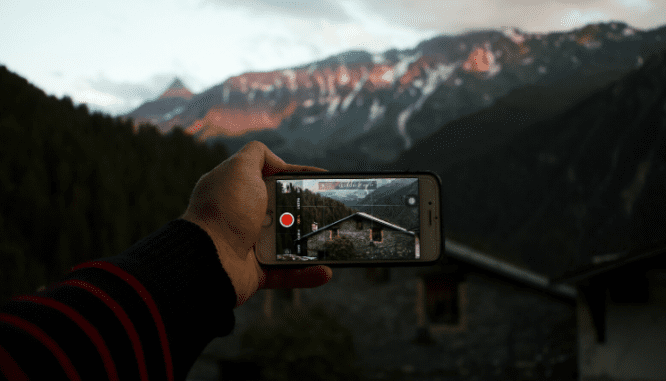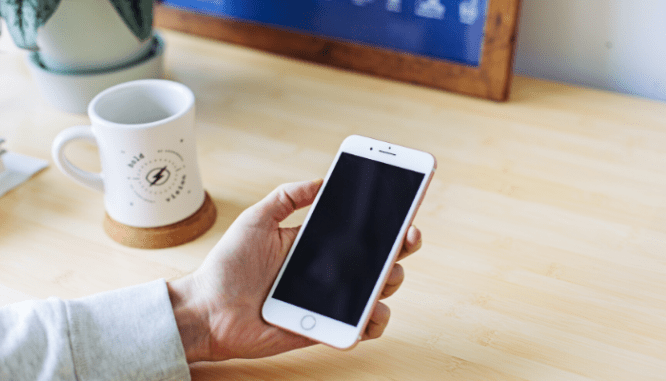How to Show Your House to Buyers in the Coronavirus Age, Virtually and Safely
- Published on
- 3-4 min read
-
 Astrid Storey Contributing AuthorClose
Astrid Storey Contributing AuthorClose Astrid Storey Contributing Author
Astrid Storey Contributing AuthorAstrid Storey is originally from Panama and spent most of her early years traveling through Central and South America. She arrived in Denver in 2003, the day after graduating college. During the next decade-and-a-half, she’s juggled a career in a variety of creative and marketing roles while building her own studio, Storey Creative, with clients in real estate, health care, publishing, and tech.
Selling your home is going to look a lot different than it did pre-coronavirus for the foreseeable future. It will be awhile before anyone feels fully comfortable inviting people to come in and out of their home in a revolving door fashion, even for the sake of attracting an offer. Thankfully, technology makes it possible to give potential buyers a realistic walkthrough of a home from a safe distance, and agents are working with sellers to drastically reduce or eliminate physical showings unless they’re absolutely necessary.
Sure, a video tour won’t always live up to the traditional showing experience for a buyer who wants to see a property in-person, just as your Zoom happy hours don’t translate the same as giving your friends and family a real hug. But everyone is adapting — at work, at home, at school, and in real estate. Everywhere across the nation, people are learning how to be flexible and open to new ways of doing things in a new world.
So we spoke to a couple of top real estate agents to get their best advice for sellers on how to show their house virtually, how they’re pre-vetting buyers before allowing them to book a tour, and the precautions they’re taking for showing homes in general — now and moving forward so long as COVID-19 is something to worry about.

Work with your agent to capture your home digitally
Video and photography will be your friend during this time. If you’ve come to the conclusion that your family is safer if nobody comes into your home (not even your agent or a photographer), then you need to be able to DIY your listing materials, and work with your agent to send it out to where the buyers can view it.
Start by whipping your home into presentable shape
- Deep clean, declutter, and tidy up your home. Remove most items from the countertops, save a few decorative and intentional pieces. Your home can look lived in, but you should be presenting a style buyers are aspiring to have.
- Increase your visible floor space by removing extraneous furniture like side tables, boxes, and toy baskets for the kids. Put these items in closets, basement storage, or in the garage in an organized fashion.
- Add some color with throw pillows, green plants like ferns (you can order faux varieties online for staging purposes), colorful flowers in vibrant vases, and pretty bowls filled with real fruit.
Now, the following tasks are normally left to the pros — but again, these aren’t normal times. Luckily you can lean into your agent’s (virtual) guidance on how to:
Take your own listing photos (which can work for video slideshows, too)
Todd Ruckle, a top-selling real estate agent in Brookside, Delaware, has been coaching sellers who aren’t comfortable with having anyone inside the home on how to take their own listing photos using their iPhone camera. These images can also be used to create a video slideshow in the event that a video walkthrough isn’t feasible, Ruckle says. Here are a few basic tips to up your DIY photography game:
- Use a tripod to provide a stable platform and reduce camera shake. This basic tripod on Amazon is $12, available on Prime, and works with smartphones.
- Avoid reflections and glare in mirrors, windows, and shower doors. Retake any photos with these issues.
- Turn on all the lights and open all blinds or curtains for your photo shoot. Pick a time of day where there’s enough sunlight to illuminate areas around windows while avoiding the long shadows that appear in the early morning or late afternoon.
- Use props to show the scale of unused spaces. For example, get out your deck furniture to demonstrate the size of your patio.
- Take several pictures of each room and get different angles. Your agent can help select your best shots.
Once Ruckle receives the photos from the seller, he submits them to BoxBrownie, a professional real estate photo editing company, for retouching. The service takes the original pictures and puts them through a 16-step enhancement process that includes: white balance, image sharpening, blemish removal, lens distortion correction, brightness and contrast adjustment, outdoor sky replacement (for the “twilight” effect), lawn enhancement and flash reflection removal, among other services.
Record your own video walkthrough
Ruckle admits that videos are a bit more complicated for a seller to master. The camera angle and the camera movement can be tricky for a newbie to fine tune.
“There’s a specific way of holding the phone, and you need to move your entire body when you move the camera, otherwise you get that funhouse effect that makes you dizzy,” he says. To edit videos, there are a variety of free or low cost apps like Animoto, Wistia or LumaFusion that don’t require editing experience.
Here are a few tips to succeed at making your own video walkthrough:
- Look at a lot of existing real estate video walkthroughs for inspiration. YouTube and real estate brokerage websites are a great place to start your research.
- Plan your route beforehand, even if it’s just a list of the shots you want to take. To give buyers an authentic tour experience, start with showing off your curb appeal, then enter the front door and begin your walkthrough of the inside.
- Consult a variety of online tutorials like “How to make awesome listing videos” and “How to shoot real estate videos” that will provide you with the main steps for creating DIY video tours.
- Set your phone to Airplane mode while the camera’s rolling — you’d hate to get a call or text while taking the perfect footage, and have to reshoot.
- Ask your agent for more guidance!
Add a self-navigable 3-D dollhouse tour to your listing
Technology platforms like Matterport allow real estate agents and other industry service providers to create a 3-D rendition of your home so buyers can get a better feel for how the home is laid out spatially, as well as which rooms are located on which floors. Matterport provides a special camera to create different representations of your home including dollhouse views, room measurements, and schematic floor plans that you can attach to your listing online.
However, use of this technology will require that you at least let your agent into your home to capture the necessary imagery. Talk to your agent about what you’re comfortable with. Hall says he has met with a seller while social distancing — in a garage while remaining 8 feet apart — exchanged a disinfected set of keys, and went in the house to do his Matterport capture for 3 or so hours. He brought with him booties, a mask, gloves, and disinfecting wipes.
He asked the seller to leave all the lights on and interior doors open to minimize getting in contact with any surfaces and cleaned up after he was done. “It’s not the easiest thing to do, but it is worth it if it means we can stay safe and also sell this house,” Hall says.
Use your virtual assets to promote your listing
When your digital assets are ready to go, most MLSs have a field to upload them directly into the listing. With current coronavirus concerns, some MLSs are relaxing their rules and allowing the promotion of (unbranded) virtual tours in the listing’s public remarks to encourage virtual shopping.

Host a virtual open house or walkthrough in real time with your agent’s help
If you don’t want to allow buyers into your home, but you are comfortable with your agent being there, a virtual open house is another good middle ground.
“Open houses have — for the most part — been replaced with Facebook Watch Parties,” says Tom Hall, a top-selling agent in Oklahoma City.
The feature — which allows a number of different users to share a live video through all their profiles and with their friends and followers — enables Hall to feature a home and answer live questions from the audience.
The watch parties are a free Facebook service and, according to Hall, will be available for up to 5 hours on the platform. That means even though the live portion of the party lasts for an hour, other people can join later and watch the saved version. He says live traffic is between 15-30 viewers in the live portion and will usually grow to on average 80 viewers before it expires.
For Ruckle, open houses — even the virtual variety — are canceled for the time being. With Delaware being extremely strict in real estate marketing at the moment, any video tours must be one-on-one with a prospective buyer and cannot be promoted openly on any social channels. Ruckle uses this time to go several times into a room, open every closet and drawer, and answer any and all questions the buyer might have.

If you must show your house, here’s what to do
Ruckle and Hall agree that interested buyers are going to want to have a chance to see the property in person before committing to writing an offer. However, it’s your house. So you have control over how you want to show it.
If you want to stop in-person showings and see what your listing could generate virtually, work with your agent to express your request to halt showings in writing. Your agent, at that point, may opt to add an addendum to extend the listing knowing that it might take a bit longer to attract an offer, according to the National Association of Realtors.
If you’re onboard with a limited number of showings so long as they are conducted as safely as possible — and if home showings are still allowed in your state — use the following protocols:
Have your agent pre-vet buyers before they can book a tour.
Normally a quick glance at the photos is enough for a buyer to decide if they want to schedule a showing. However, as a seller you’ll want to avoid the hassles and unnecessary risk that comes with letting unqualified or non-serious buyers inside your home amid a pandemic.
Since the arrival of coronavirus, agents are double-checking if a house is truly a good fit before scheduling a showing. Hall says he will pull up the location on Google maps and talk to buyers about things like high traffic streets or distance to the closest school or park to eliminate buyers who won’t find the home to be a solid match.
He uses virtual tours to help a buyer determine whether the layout flows in the way they prefer, or uses Matterport to virtually measure whether the buyer’s furniture fits in the rooms.
If the buyer is extremely interested in a listing — in many cases not only pre-qualified but also pre-approved or with a cash letter in hand — real estate teams are working hard to ensure safety for everyone showing houses during coronavirus.
Limit the number of people who can enter.
Buyers shouldn’t bring their kids, and ideally only one of them should enter at a time. The other can wait from the car and get updates via FaceTime.
Have everyone sign a COVID-19 certification prior showings.
In some states, agents are using a special form to be signed by all parties present at a showing — this includes any agents, sellers, as well as the potential buyers — representing that, to the best of their knowledge, they are not infected with and have not been exposed to the coronavirus.
Require that visitors take hygenic precautions.
Ask that anyone who enters protective gear such as masks, booties, and gloves, and that they sanitize their hands before entering.
Prepare the home for minimal touching.
Leave all the interior doors open, open up closets and cabinets, and turn on all the lights to minimize touching of surfaces.
Clean and disinfect before and after a showing.
While most agents and buyers are coming in taking a certain level of protective measures, the CDC still recommends preventing exposure as the number one way to protect yourself from getting sick. Some of the things you should do when showing a house for sale this season are:
- Ensure you’re washing your hands often
- Use hand sanitizer that is at least 60% alcohol and rub your hands until they feel dry.
- Clean and disinfect frequently touched surfaces immediately after every showing
Follow health guidelines from the CDC and use cleaning products approved by the EPA for fighting against the virus.
Can you attract an offer with limited or restricted showings?
According to Ruckle, this crisis hasn’t deterred buyers in the under-$250k bracket yet. Houses in Delaware are still selling fast as long as mortgage brokers can process the transactions and the inventory remains low in that high-traffic price point. Hall, in Oklahoma City, is pretty optimistic that sales will continue to happen in his area — as long as real estate continues to be deemed essential there — and is bullish about his ability to close a listing as long as he can do private showings to potential buyers.
Before the crisis, data from HomeLight’s Top Agent Insights Survey showed that less than 5% of transactions involved buyers making offers sight unseen, and only 30% of agents felt that sight-unseen transactions were on the rise in their markets. However, Hall admits “this is going to change the way sellers and buyers act around listings and real estate transactions for a long time after everything is said and done. After this is over, we’re going to see a different world.”
Header Image Source: (Patrick Perkins / Unsplash)
All product names, logos, and brands are property of their respective owners. All company, product and service names used in this website are for identification purposes only. Use of these names, logos, and brands does not imply endorsement or any affiliation with HomeLight.
